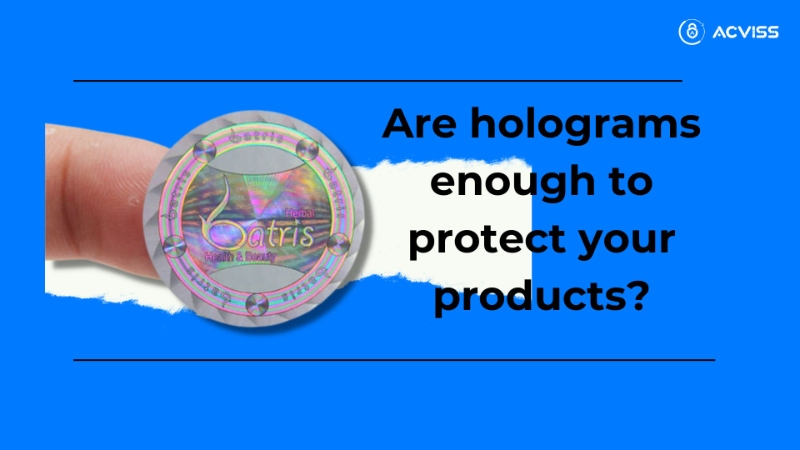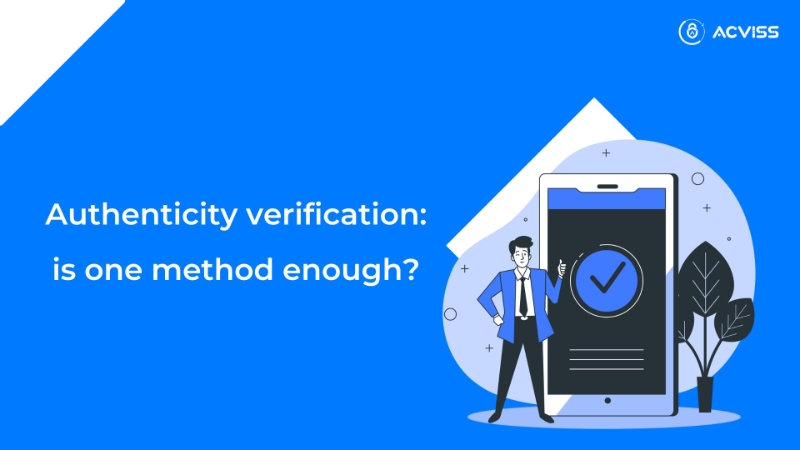Are holograms enough to protect your products? It’s time to explore more

Did you know that holograms were an accidental discovery by Dennis Gabor? Gabor discovered holograms while trying different techniques to capture images. A technology of the 20th century, holography was never intended to be used on packaging for authenticity verification. Yet, holograms remain an easy and popular choice as an anti-counterfeit tool.
(Read more on Anti-counterfeit technologies that can protect your supply chain)
But are holograms effective in the process of authenticity verification and brand protection? As supply chains become complex, can we still rely on simple holograms as a quick fix to counterfeits? Before we dismiss holograms, it is essential to note that the holograms we use today are not the same as those of the 20th century. With digital cameras, holograms have become technologically more sophisticated. In addition, holograms brought in the concept of brand identity. After all, in the past, holographic technology was expensive and difficult to replicate. But today, the use of holograms as a standalone solution for authenticity verification, brand protection, and product traceability remains questionable.
The shortcomings of holograms for authenticity verification and brand protection:
There are many types of holograms available in the market. Depending on the technology and imprinting method, holograms can be simple or complex. The effectiveness of holograms in packaging also depends on how they are applied. For example, a monochromatic sticker with a flip-flow effect is easy to duplicate. Security seals are often made using laser technology and software. Companies that take brand protection seriously invest in unique holograms. But even sophisticated and unique holograms have their shortcomings:
Useful only as a deterrent
Products with a hologram make a statement to potential counterfeiters. It shows that the brands care about the issue of counterfeits and have taken the first step to tackle the problem. Simple hologram stickers are easy to make and cheap. Many brands use such stickers as lip service to fight fakes.
Expertise needed to verify holograms
Modern holograms need high-level technology for imprinting and verification. Some experts believe that unique hologram stickers are tough to replicate. But can the general public understand the difference between a real and a fake hologram? If the replica resembles the original hologram to some extent, buyers won’t suspect an issue. Passable replicas can fool many customers. Remember, passable fakes are cheap and easy to make.
Hologram verification is effortful and non-engaging
Who has the time to scrutinize a product? Buyers are in a hurry, and holograms are complicated to verify. Also, hologram for brand protection is a passive technology. It does not engage or capture the attention of the customers. Instead, holograms offer a ‘best guess’ for verification.
Overt stickers offer false security
Customers are now used to seeing too many overt markers on the products. In addition, verifying a hologram is effortful and not very efficient. So, most buyers feel reassured when they see a hologram on the product. It may even be a fake sticker, but it doesn’t matter to customers.
Open invitation to more counterfeit
Once look-alikes become passable, the original hologram becomes useless. Making fake hologram stickers has become a business for counterfeiters.
Despite the many hologram issues, it is not a technology of the past. Holograms offer robust protection when used as a holistic approach to counterfeiting, brand protection, and ensuring product traceability.

Authenticity verification: is one method enough?
The grey market operates through various levers. Is there a gap in your supply chain? Is end-to-end product tracking and tracing an issue? Perhaps your brand is a victim of online abuse. Counterfeit is a complicated, complex global issue. Maybe in simpler times, holograms were practical tools for authenticity verification. But with technological advancement and the advent of eCommerce, we need more. Brands can no longer rely on a single and overt anti-counterfeit technique. Instead, brand protection is a holistic strategy.
Certify
Certify by ACVISS fits into every step of your supply chain, from production to consumption.
Tamper-evident hologram: ACVISS offers a combination of a tamper-evident hologram label. The labels embedded with a unique code can be verified in real-time using the ACVISS mobile application.
Patented process: Each label is embedded with Unique, Variable, Non-Cloneable & Non-Predictable 2D and 3D codes.
Tamper evident and tamper proof: The code is embedded into a Secure Tamper Evident & Destructive Self Adhesive Hologram Label. Thus, the label is completely tamperproof. Verification is possible only through the ACVISS Mobile App, making it impossible to replicate using other QR scanning Apps.
As technology evolves, we need to change how we see and use holograms. We already know that now holograms are embossed on the product. However, hologram technology has not come to an end but a slight bend.
Some of the Top FAQs about Holograms based on Industries
1. How do holograms contribute to brand protection in various industries?
2. What types of holographic technology are commonly used for anti-counterfeiting measures?
Common types include 2D/3D holograms, dot matrix holograms, and true color holograms, each with unique applications in anti-counterfeiting.
3. Can holograms effectively secure products in industries with complex supply chains?
Yes, holograms are versatile and can secure products in industries with intricate supply chains, providing a robust defense against counterfeiting.
4. What role do holograms play in enhancing consumer trust and brand integrity?
Holograms instill trust by offering visible proof of authenticity, deterring counterfeiters and assuring consumers of genuine products.
5. Are there specific industries where holograms are more susceptible to duplication or counterfeiting?
Certain industries, like luxury goods, may face higher risks of hologram duplication, emphasizing the need for advanced security features.
6. How do holograms contribute to the traceability of products in the pharmaceutical and food industries?
Holograms aid traceability in pharmaceuticals and food by providing a visible, trackable feature that ensures the authenticity of each product.
7. What challenges do industries face in implementing holographic solutions for authentication?
Challenges include cost considerations, technological advancements by counterfeiters, and the need for standardized holographic solutions.
8. Are there regulations or standards governing the use of holograms in different sectors?
Regulations vary, with some industries having specific standards for holographic authentication to combat counterfeiting and ensure quality.
9. How do holograms evolve to meet the changing needs of industries over time?
Holograms continually evolve through innovations like nano-holograms and machine learning, adapting to stay ahead of counterfeiting techniques.
10. Can holographic technology be seamlessly integrated into existing packaging solutions across diverse industries?
Yes, holographic technology is adaptable and can be seamlessly integrated into existing packaging across a wide array of industries.
11. Why do nutraceutical brands use holograms and labels?
Nutraceutical brands, in particular, have embraced holograms and labels as indispensable tools for brand protection and ensuring product traceability. The nutraceutical industry faces a constant challenge of counterfeit products entering the market due to the popularity of health supplements. Holograms and labels not only serve as a deterrent to counterfeiters but also provide consumers with the assurance of product authenticity. In an industry where trust is paramount, holograms and labels play a vital role in maintaining brand integrity and safeguarding consumers against fake products.